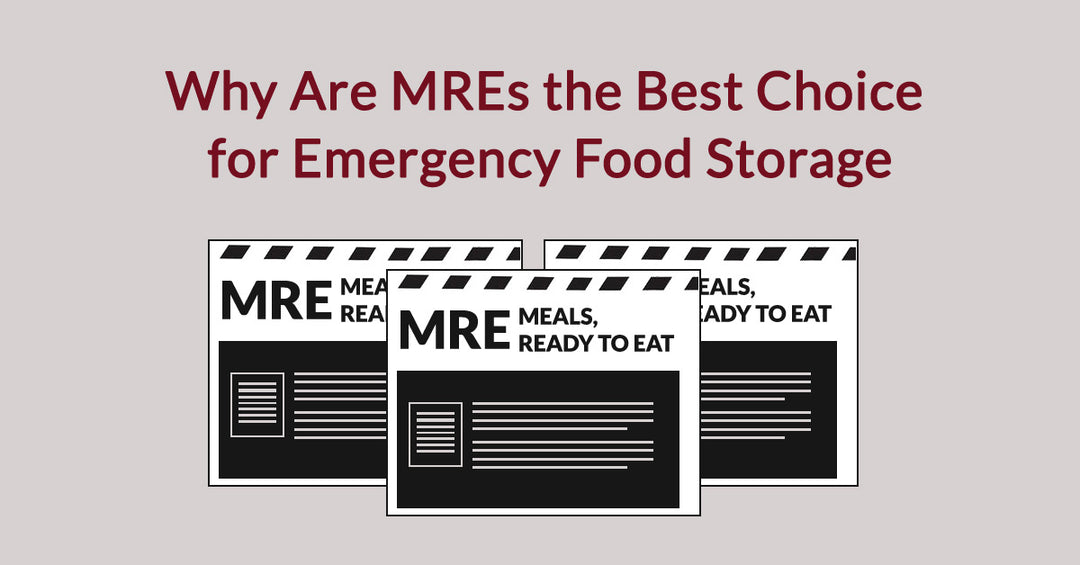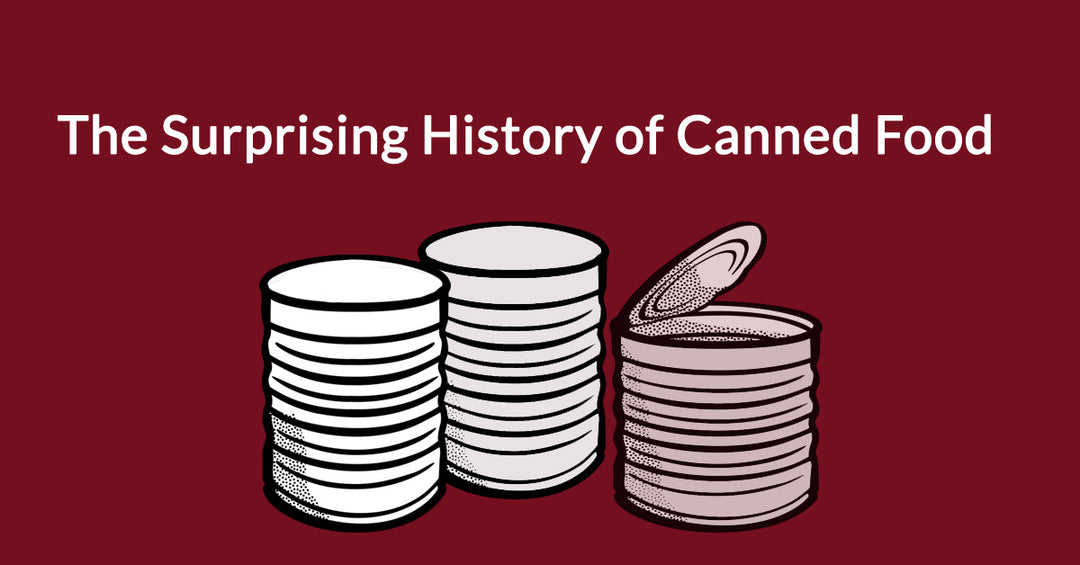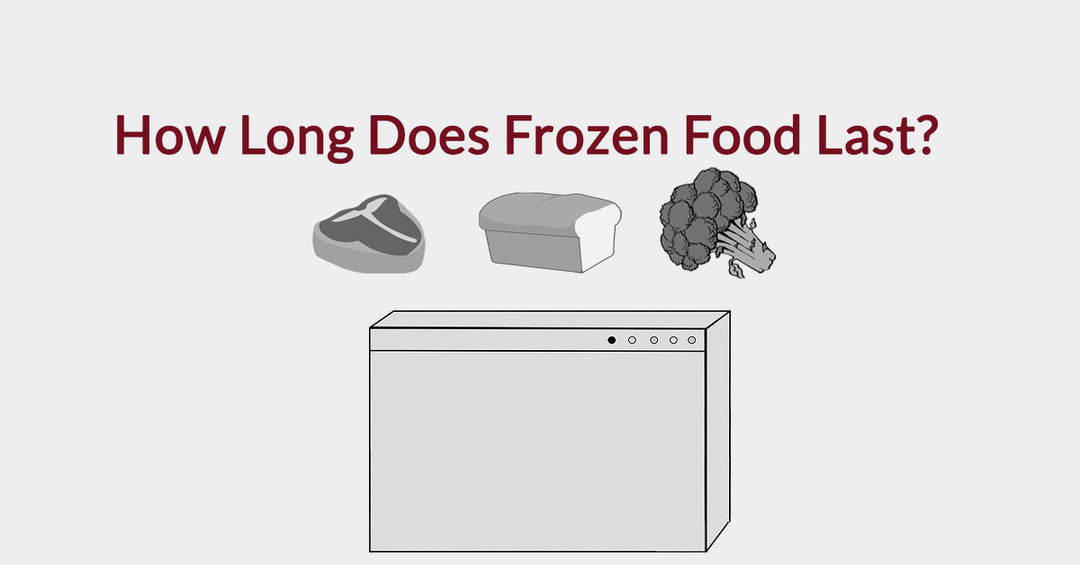4 Crucial Tips For Emergency Food Prepping

There are many reasons that you may want to prepare emergency food storage. Like many, you may be worried and planning ahead for the next pandemic and the food shortage that will come along with it. Depending on your geological location, a natural disaster may be on your mind.
Whether you want to be prepared for a disaster, famine, economic crash, or the apocalypse itself -- emergency food prep is one of the first places you should start. Aside from a sufficient water supply (1 gallon per person/pet per day), food is the most essential item you'll need for survival.
It may seem like a simple process at first, but once you dive in, you'll realize that there are many decisions to be made. If you're having trouble deciding where to start, we've compiled a list of tips to assist you. These pointers are a great jumping off point to make sure your customized emergency food preparations contain all of the essentials.
1. Prep According to Your Time Period
Depending on what sort of disaster you're planning for, you'll want to prep enough food and the right kinds of food for a correlating amount of time. For example, an earthquake or hurricane may leave you stranded for a week or so, but a break in the food supply chain because of a pandemic may mean you need food for at least a month.
Short-Term Emergency Prepping
For short term survival, canned goods are a great way to go. You can always keep a good supply of extra canned goods set aside. Make sure you stock up on a variety of foods such as vegetables, fruits, soups, children's food, and pet food.
The University of Georgia also suggests items that can give you extra energy. Peanut butter, nuts, and granola are great options. For families, you may also want to stock some powdered milk. Make sure you have items for those with special dietary needs, such as diabetes or food allergies.

Long-Term Emergency Prepping
If an event occurs that causes you to be isolated for more than a week or two, you'll want to be stocked up on longer term food items. One of the number one choices for this is MREs. An MRE is a Meal Ready to Eat. MREs were created by the military in 1975, but are now readily available to the public.
If you're located in the US or Canada, Meal Kit Supply is a great place to stock up for the long haul. Our MREs are much more civilian friendly, and include food options that anyone in a survival situation would be happy to enjoy.
Most people can survive on one 1,100-1,200 calorie MRE a day. However, it never hurts to prepare for two per person per day, just in case there is unforeseen exertion of energy. The MREs contain three courses: a protein-packed entree, a side dish, and bread or crackers with a spread.
You'll be able to heat your meal with the included heater, which makes MREs the preferred option to other rations that are eaten cold or dry. They also include drink mix options, some of which contain electrolytes for that extra boost of energy.

2. Consider Your Storage Space
If you've already chosen your storage space -- awesome! You're one step ahead. If you haven't, here are a few factors to consider when selecting a location for your survival food:
- Could the space be restricted after a disaster?
- Will everything be safe from animals and pests?
- Is storage easily accessible, even if you are injured?
Basements are great options for storage, unless you live in an area where flooding is likely during a disaster. Attics work the same way, except for areas prone to tornadoes.
For the pest issue, you might consider special containers for your food. Sealed Rubbermaid containers or a free-standing cabinet are easy options, but sturdy shelves can be very helpful. You might also want to store some extra ways to transport the food, such as backpacks and wagons.
Once you have your space set up, you can really evaluate how much food you can hold. If you live in a small apartment, you might only be able to prep for a couple weeks. Large houses could have a few months of food stored in them.
3. Consider Long-Lasting Alternatives
It may seem easy to just dash off to the store and buy a ton of pantry food for your prep. While most canned goods are great options for short term, there are some easy alternatives you can choose that will allow your short term supply to transition to long term. Here are a few things Urban Survival Site suggests.
Go ahead and substitute standard crackers for hardtack. It's a simple, dry bread that is made of flower, water, and salt. It was commonly used for long sea voyages.
If you want to prep for cooking options, vegetable oil isn't the best way to go. Coconut oil or even lard will last about a year longer.
Unless you want to continue to restock your supply every three to six months, consider opting for foods that have a shelf life of at least one year. This means avoiding things like salad dressing, condiments, liquid and soft dairy, and bread products that can quickly go stale.
Now, if you want to include some of your favorite perishable items in your survival food supply, opt for freeze-dried versions. These can be quite expensive, so it's best to just start out with a couple. Milk, butter, eggs, and cheese should be fairly easy to find and store.
4. Consider the Extreme
If you're a person who wants to be prepared for every possible situation, then you should also food prep for a time period longer than a year or a situation where you can't take your food supply with you.
This is where a bug-out bag comes in handy. In it, you can include some basic items for finding and capturing your own food. A few things we suggest you pack are:
- Manuals on edible plants in your area
- Collapsible fishing pole, line, and a compact tackle box
- Wire for trapping
- Slingshot for small game
Bonus: Don't get too carried away with food and forget about water. You may find that by the time you get around to collecting your water supply, your entire storage area is filled. Make sure you have room to store several gallons for each person or enough to last you the first few days to a week. After that, you might want to opt for more compact and long-term hydration options. Water purification tablets or water filtration systems are great to have on hand, and can be transported in a hurry.




